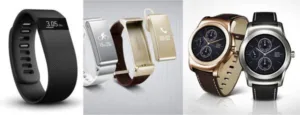IHS expects the smartwatch market to grow from 3.6 million units in 2014 to 101 million in 2020.
The overall success of the smartwatch market will be driven by the Apple Watch, said IHS analyst Antonios Maroulis. “The smartwatch will become a key accessory device offered by most leading smartphone manufacturers seeking to dominate this new profitable market. We forecast the ratio of smartwatch shipments to smartphone shipments will increase from 1:500 to 1:20 between 2014 and 2020”, he added.
All smartwatch suppliers will gain from Apple’s market entry. Consumer awareness of the category and its benefits will grow, and an ‘enormous’ addressable market will be untapped. This is because the Apple Watch requires an iPhone 5 or newer and the price is relatively high (starting at $350). Apple customers unwilling to spend so much, and the estimated 2 billion Android smartphone owners, will look elsewhere.
Apple Watch shipments are forecast to reach 19 million units this year – a 56% market share. Share will fall to 38% by 2020 as other makers continue to develop their products and address the Android smartphone market.
IHS writes that makers will ship 96 million Android Wear devices between 2015 and 2020. If iPhone support is added to the OS, its addressable market will climb even further.
However, Apple’s strength is also a weakness for the smartwatch market. Ian Fogg, senior director of mobiles & telecoms at IHS, warned, “Should Apple stumble with its foray into smartwatches, the smartwatch market will suffer similarly. Smartwatches could then follow the fate of Google Glass. Without Apple and its marketing strength, the smartwatch category needs greater marketing spend from other smartwatch makers to overcome damage to consumer perceptions… Apple’s smartwatch competitors need the Apple Watch to succeed”.
Apps will drive the smartwatch market, with Apple and Google’s existing app stores providing a significant lead over competitors. There may be some ‘tactical success’ in the short term with proprietary operating systems (Pebble, Asus’ Kood OS) or niche open platforms (Tizen). However, in the long-term only standard platforms with mass adoption will offer significant scale to attract app developers.
Weak app ecosystems will hold back non-Apple and non-Android Wear smartwatch operating systems, to the extend that IHS forecasts a market share of just 40% for these devices in 2020.

